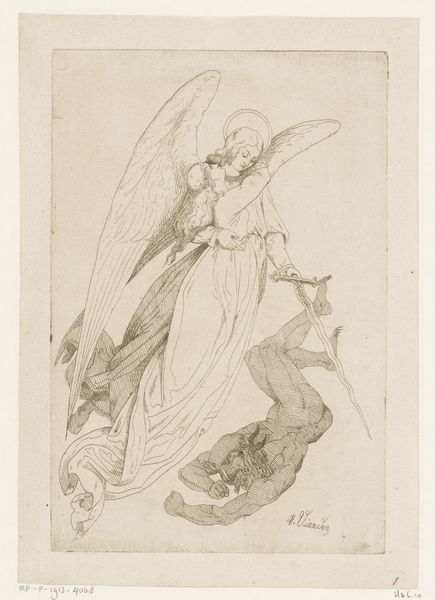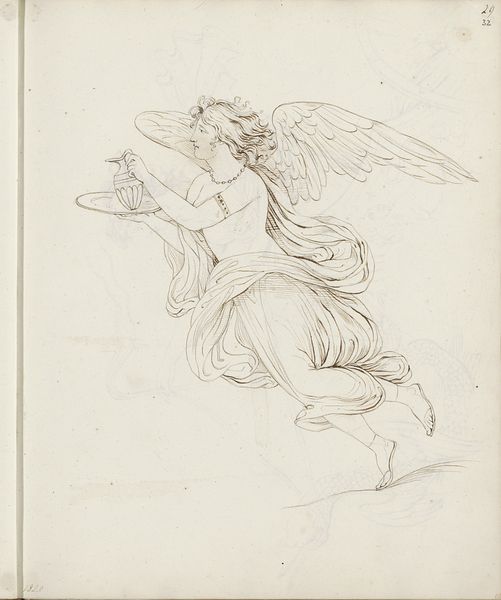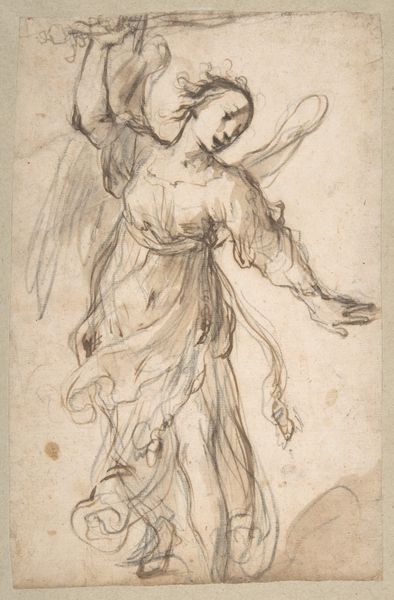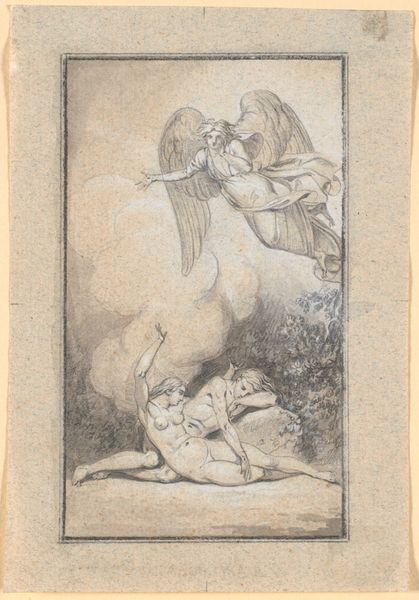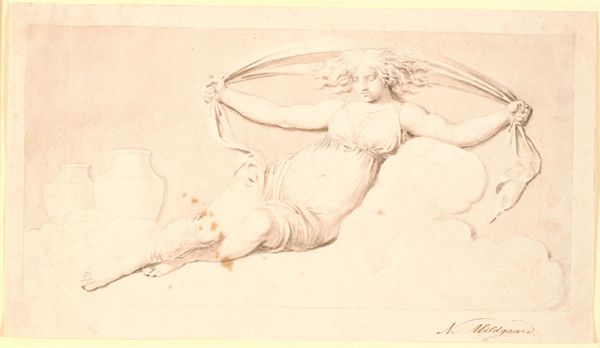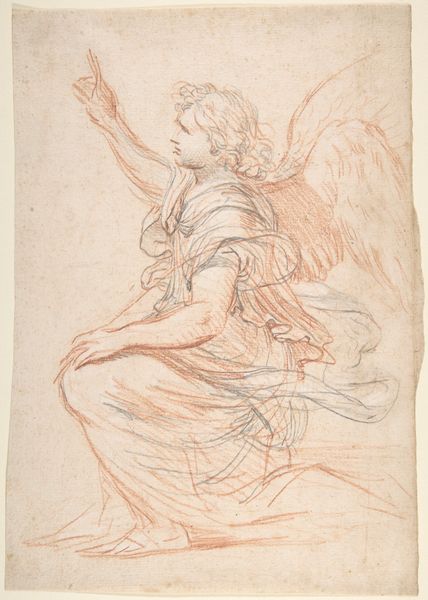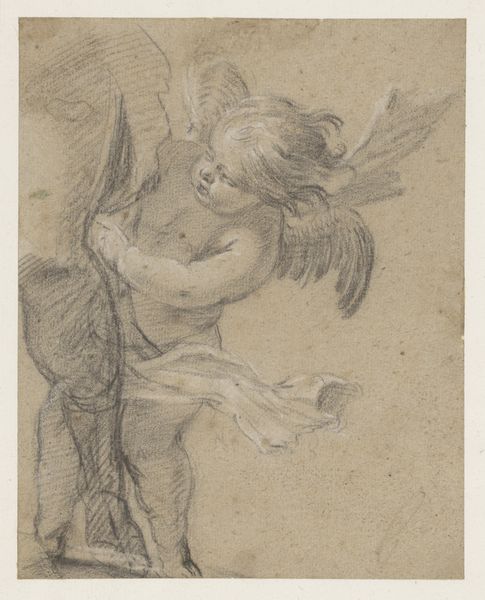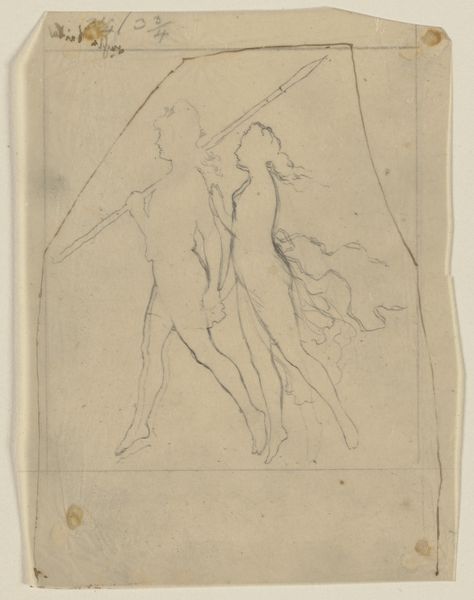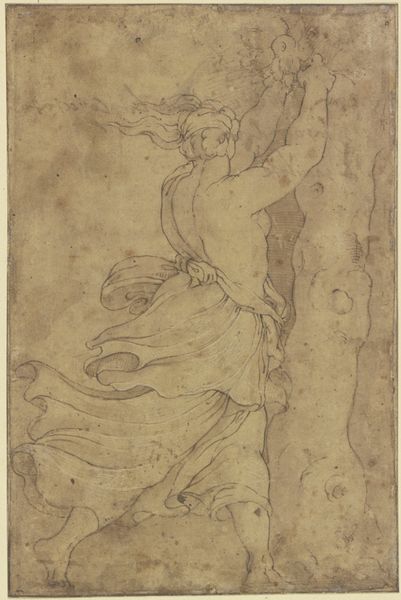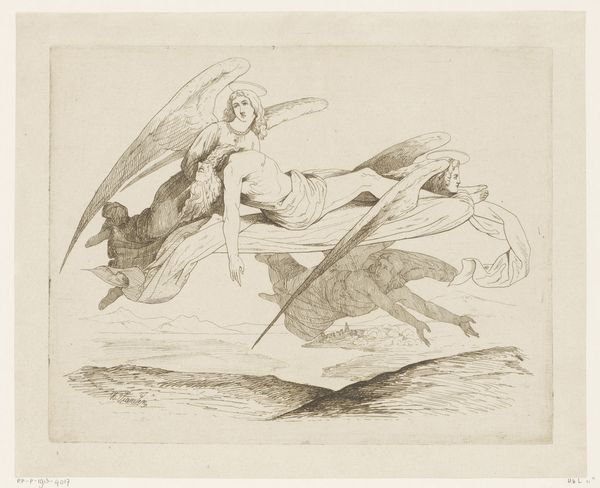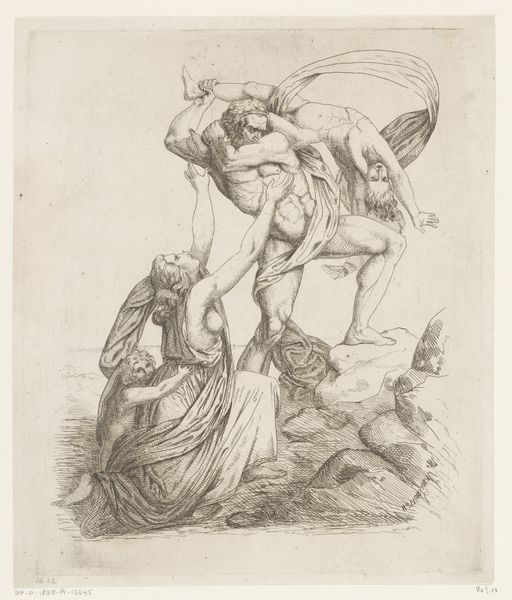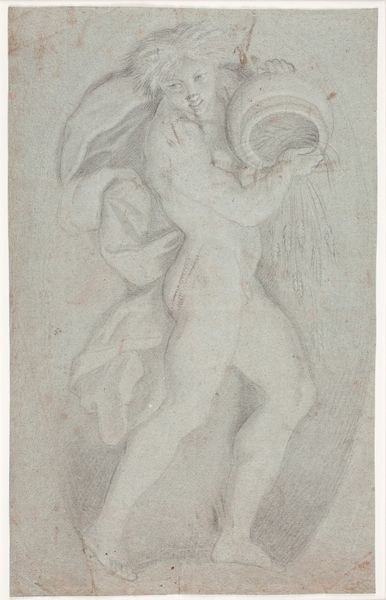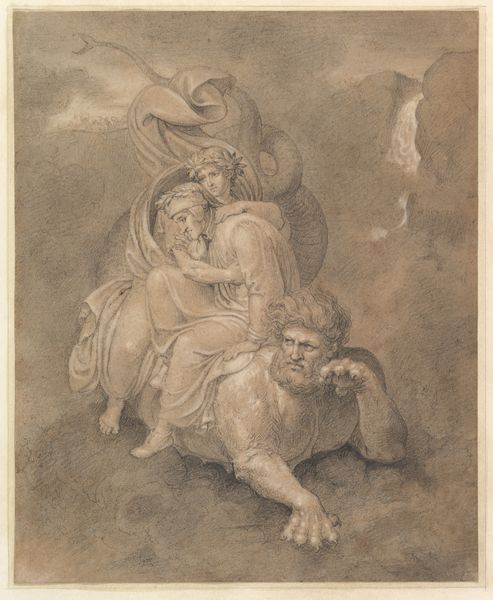
drawing, paper, ink
#
drawing
#
figuration
#
paper
#
ink
#
romanticism
#
history-painting
Dimensions: height 196 mm, width 130 mm
Copyright: Rijks Museum: Open Domain
Curator: Here we have Heinrich Vianden’s “Engel tilt een vrouwelijke heilige en verslaat een demon,” which translates to “Angel lifts a female saint and defeats a demon," made in 1836. Editor: It’s quite striking! The lightness of the angel lifting the saint contrasts sharply with the darkness and frantic energy of the demon being defeated below. Curator: Absolutely. Vianden was working in the Romantic style, which explains the dramatic subject matter and the intense emotion captured. This drawing, done in ink on paper, is a window into the 19th century's fascination with the spiritual realm, wouldn’t you say? Editor: I think so. I'm particularly drawn to the way the angel is holding the saint. There's a tenderness there, almost an intimacy, which is quite powerful considering the battle scene. It really adds to the overall dynamic. Curator: Definitely. Romanticism explored such extremes. Light and shadow, good and evil, love and fear...it's all here. But also keep in mind the social and religious context: post-revolutionary Europe was searching for moral and spiritual certainties amid immense change. Art was frequently used to instill values. Editor: Do you think viewers found the image more didactic or more uplifting? To our eyes, such depictions might seem pretty intense, but in that historical moment, they probably would have embodied hope, I guess. Curator: I suspect it’s both, but let’s consider how its public function could promote faith in institutions, right? And I agree, for contemporary audiences, it invites us to ponder the power of imagery. Its symbolism asks if the triumph of virtue truly means extinguishing our darkness. Editor: Hmm, very true. It also pushes me to remember that what one generation celebrates, another may critique. Curator: Well, it remains a work of both considerable artistic skill and fascinating social commentary, a true artifact of its time, still alive for us now. Editor: Precisely. Beauty and thought-provoking conflict, that's what remains with me.
Comments
No comments
Be the first to comment and join the conversation on the ultimate creative platform.
